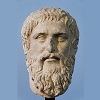3: China and East Asia to the Ming Dynasty
- Page ID
- 132246
East Asia can be defined in two different ways. Geographically speaking, it can be defined as the eastern region of the Asian continent and the countries located there, principally China, North and South Korea, Taiwan, and Japan. But historians also define East Asia as a broader cultural realm, and include countries that both shared close historical relations with China and were impacted by China’s political and legal institutions, and Confucian and Buddhist traditions. When defined in this way, Vietnam is also included. This chapter, however, as an introduction to the early history of East Asia, will focus on China, Korea, and Japan.
- 3.1: (Module 5) 3.10- The Yuan Dynasty
- Like earlier neighbors lying to the north of the Song, the Yuan [you-an] was also a northern conquest dynasty. The key players were steppe nomads living on the grasslands of Mongolia, known as Mongols, and their leader Genghis Khan. The story of their rise and how they created the largest territorial empire in the history of the world properly belongs to Chapter Eight--Central Asia. For this lesson, we will only provide a brief introduction.
- 3.2: (Module 5) 3.7- The Period of Division, 220-589CE
- Like these other empires, the Han Dynasty eventually fell. China was then divided up by independent, short-lived kingdoms until 589 CE, when the Sui Dynasty reunited most of the territory once controlled by the Han. Thus, for four centuries, during what is known as the Period of Division, China was politically unstable and racked by endemic warfare. Yet, in spite of the violence, these centuries also saw vibrant cultural developments, as Buddhism became an organized institutional religion reshap
- 3.3: (Module 5) 3.8- The Tang Dynasty and the Emergence of East Asia
- Like the Han Dynasty, the Tang was one of the most dynamic and long-lived dynasties in China’s history. Other kingdoms existed in Japan and Korea.
- 3.4: (Module 5) 3.9- The Song Dynasty
- After the Tang Dynasty fell, China was once again divided up by numerous, contending kingdoms. Out of this turmoil and warfare arose the Song Dynasty (960 – 1279 CE).
- 3.6: Geography of East Asia
- China’s early historical development long predated Japan’s and Korea’s, which is why a chapter on East Asian history logically begins in the second millennium BCE with China’s first dynasty. However, today’s nation of China is much larger than China was in ancient times. In earlier times, the bulk of the Chinese population lived in China proper, by which we mean the historical heartland of ancient China.
- 3.7: China from Neolithic Village Settlements to the Shang Kingdom
- In China, the first major states emerged along China’s second longest river–the Yellow River. These states are the Xia [shee-ah] Dynasty (c. 1900 – 1600 BCE), Shang [shawng] Dynasty (1600 – 1046 BCE), and Zhou [joe] Dynasty (1045 – 256 BCE). Each of these kingdoms was ruled by a line of hereditary monarchs hailing from one lineage, which is why they are also referred to as dynasties.
- 3.8: The Long Zhou Dynasty (1046- 256 BCE)
- After the Xia and Shang, the next major dynasty in Chinese history is the Zhou Dynasty (1045 – 256 BCE). In 1046 BCE, a Zhou king overthrew the last Shang ruler and established control over much of north China. In the early centuries of Zhou rule, during the Western Zhou (1046 – 771 BCE), Zhou kings dispatched kinsmen to territories he granted to them. These nobles were allowed to rule their own lands hereditarily, so long as they observed certain obligations to their king.
- 3.9: The Qin Dynasty and the Transition from Ancient to Imperial China
- In 221 BCE, the First Emperor had brought the Warring States Period to a close by defeating the last remaining state. Hence, he had realized the aspirations held by the many rulers he subjugated, that is, to unify the known world under one powerful monarch and, by so doing, to initiate an age of peace and prosperity, one rooted in obedience to a sagely ruler. The title “First Emperor of Qin,” however, was assumed by this conqueror only in the wake of his final victory.
- 3.10: The Han Dynasty, 202 BCE-220 CE
- After the First Emperor died in 210 BCE, the Qin Empire rapidly disintegrated. Historians debate causes but highlight weak successors manipulated by the intrigues of a high minister and court eunuch; excessive demands on the population for building projects, tax revenue, and military conscription; and a climate of fear created by the harshly punitive legal system. By 207 BCE revolts were breaking out across the land, as rebels accrued armies, seized territory, and even declared themselves kings.
Thumbnail: Terracotta Mid-rank officer of the Terracotta Army in Xi'an. (David Castor).


